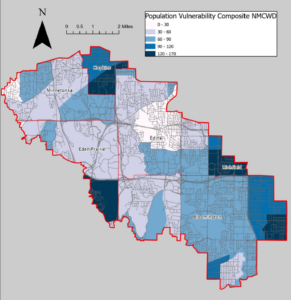What is DEIA?
DEIA stands for Diversity, Equity, Inclusion, and Accessibility. It represents a set of principles and practices aimed at promoting a more inclusive and equitable environment within organizations and communities.
- Diversity: Refers to the presence of a wide range of human differences, including but not limited to race, ethnicity, gender, sexual orientation, age, physical abilities, religious beliefs, and socioeconomic status.
- Equity: Involves ensuring fairness and justice in the distribution of resources, opportunities, and benefits. It recognizes that individuals may have different needs and works to address those differences to achieve equal outcomes.
- Inclusion: Focuses on creating a culture and environment where all individuals feel valued, respected, and included. It goes beyond just representation and aims to foster a sense of belonging.
- Accessibility: Involves making sure that all individuals, regardless of their abilities or disabilities, have equal access to information, services, and opportunities.
DEIA Becomes a District Priority
In October 2022, the Nine Mile Creek Watershed District Board of Managers held a board retreat to identify District priorities. At the retreat, the board of managers identified DEIA improvements within District processes and overall work as a priority. In April 2023, the board of managers adopted a DEIA policy statement:
The Nine Mile Creek Watershed District strives to understand and to prioritize diversity, equity, inclusion and accessibility. Within the context of strategic watershed management, the district will work toward addressing current and historical inequities in every facet of its operation.
Using the Hennepin County Climate Vulnerability Assessment, the District mapped out its population to identify “vulnerable communities”. The District’s vulnerable communities are those that bear the largest combined social and environmental burdens.
Variables included in the score:

- Asthma hospitalization rates
- COPD hospitalization rates
- Households with no vehicle
- Limited English proficiency
- Median household income
- No high school degree
- People of color
- Population 5 and under
- Population below 185% poverty threshold
- Population density
- Population over 65
- Population with any disability
- Renter housing units
- Unemployment rates
- Flood susceptibility
- Urban heat island
- Air quality
- Tree canopy
The watershed district has already used this map to help prioritize cost share grant funding and plans to use maps like this as part of work prioritization efforts during the development of its next 10 year water management plan.
District Hires DEIA Consultant
In August 2023, the Nine Mile Creek Watershed District hired Zan Associates to develop a DEIA Plan to help guide the integration of a DEIA lens into District policy and programs. In the fall of 2023, Zan completed an internal review of the District and developed an Engagement Plan to gather input and values from the District’s underserved communities. This engagement plan is preliminary and will be reassessed and modified as needs arise. Engagement efforts will begin at the start of 2024.
